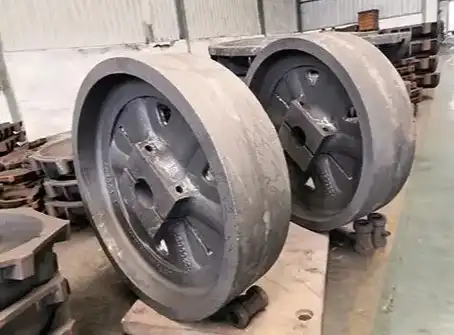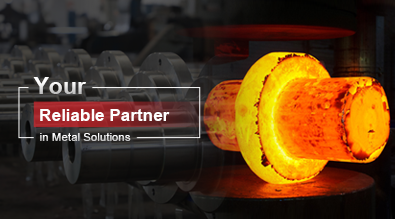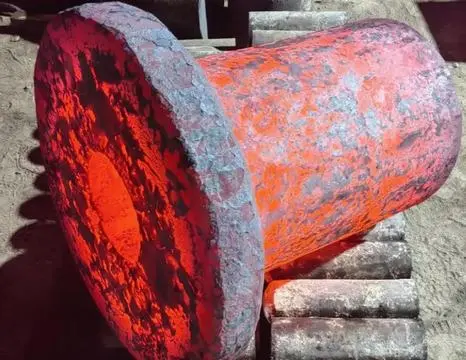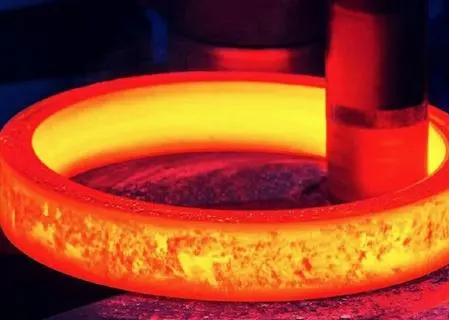Why Can't You Weld Cast Ductile Iron?
Cast ductile iron, also known as nodular iron or spheroidal graphite iron, is a type of cast iron that has gained popularity in various industries due to its unique properties. However, one common challenge faced by engineers and manufacturers is the difficulty in welding this material. In this blog post, we'll explore the reasons behind the challenges of welding cast ductile iron and discuss potential solutions and alternatives.

What are the unique properties of Cast ductile iron that make it difficult to weld?
Chemical composition and microstructure
Cast ductile iron has a unique chemical composition and microstructure that contribute to its welding challenges. The material contains a high carbon content, typically ranging from 3.2% to 3.8%, which is significantly higher than that of steel. This high carbon content, combined with the presence of other alloying elements such as silicon, manganese, and magnesium, creates a complex microstructure. The graphite in cast ductile iron is present in the form of spheroidal nodules, which give the material its ductility and strength. However, these nodules can be disrupted during the welding process, leading to changes in the material's properties and potential weld failures.
Heat sensitivity and thermal conductivity
Cast ductile iron is highly sensitive to heat input during welding. The material has a relatively low melting point compared to steel, and it experiences rapid heating and cooling rates during the welding process. This thermal sensitivity can lead to the formation of undesirable microstructures, such as martensite or carbides, in the heat-affected zone (HAZ). These microstructural changes can result in increased hardness, reduced ductility, and potential cracking in the welded area. Additionally, cast ductile iron has a lower thermal conductivity compared to other metals, which can lead to localized heat buildup and further complicate the welding process.
Susceptibility to cracking
One of the primary reasons why welding cast ductile iron is challenging is its susceptibility to cracking. The material is prone to both hot cracking and cold cracking during and after the welding process. Hot cracking can occur due to the presence of low melting point constituents in the material, which can form liquid films along grain boundaries during welding. Cold cracking, on the other hand, is often caused by the formation of brittle microstructures in the HAZ and the presence of residual stresses. These cracking tendencies make it difficult to achieve sound, defect-free welds in cast ductile iron without implementing specific precautions and techniques.
What are the potential consequences of improper welding on Cast ductile iron?
Mechanical property degradation
Improper welding of cast ductile iron can lead to significant degradation of its mechanical properties. The high heat input during welding can cause the spheroidal graphite nodules to transform into flake-like structures, reducing the material's ductility and impact resistance. Additionally, the formation of hard and brittle phases in the HAZ, such as martensite or carbides, can result in increased hardness and reduced toughness. These changes in mechanical properties can compromise the overall integrity of the welded component, potentially leading to premature failure under service conditions. It is crucial to carefully control the welding parameters and employ appropriate techniques to minimize the negative impact on the material's mechanical properties.
Microstructural changes and defects
Welding cast ductile iron can induce various microstructural changes and defects that affect the material's performance. The heat input during welding can cause the decomposition of the original matrix structure, leading to the formation of undesirable phases such as ledeburite or cementite. These hard and brittle phases can significantly reduce the material's machinability and increase the risk of cracking. Furthermore, improper welding techniques may result in the formation of porosity, inclusions, or lack of fusion defects in the weld metal. These defects act as stress concentrators and can initiate cracks or fatigue failures in the welded component. To mitigate these issues, it is essential to employ proper welding procedures and post-weld heat treatments to restore the desired microstructure and minimize defects.
Corrosion resistance reduction
Cast ductile iron generally exhibits good corrosion resistance due to its graphite nodules and the protective oxide layer that forms on its surface. However, improper welding can compromise this corrosion resistance. The heat input during welding can disrupt the protective oxide layer and alter the distribution of graphite nodules in the HAZ. This can create localized areas with reduced corrosion resistance, making the welded component more susceptible to galvanic corrosion or other forms of corrosive attack. Additionally, the formation of carbides or other brittle phases in the weld zone can create preferential sites for corrosion initiation. To maintain the corrosion resistance of cast ductile iron after welding, it is crucial to implement appropriate welding procedures and post-weld treatments that preserve the material's microstructure and surface characteristics.
What are the alternative joining methods for Cast ductile iron?
Mechanical fastening
Mechanical fastening is a viable alternative to welding for joining cast ductile iron components. This method involves using bolts, screws, rivets, or other fasteners to create a physical connection between the parts. Mechanical fastening offers several advantages when working with cast ductile iron. It eliminates the need for heat input, thus avoiding the microstructural changes and thermal stresses associated with welding. This method also allows for easy disassembly and reassembly of components, which can be beneficial for maintenance or repair purposes. However, when using mechanical fastening for cast ductile iron, it is essential to consider factors such as stress concentration around the fastener holes, proper torque application, and the potential for galvanic corrosion if dissimilar metals are used. Careful design and selection of appropriate fasteners can help ensure a reliable and durable joint in cast ductile iron assemblies.
Adhesive bonding
Adhesive bonding is another alternative joining method for cast ductile iron that has gained popularity in recent years. This technique involves using specialized adhesives to create a strong bond between the components without the need for heat input or mechanical fasteners. Adhesive bonding offers several advantages for cast ductile iron, including the ability to join dissimilar materials, distribute stress more evenly across the joint, and maintain the original properties of the base material. When selecting adhesives for cast ductile iron, it is crucial to choose products specifically formulated for metals and consider factors such as temperature resistance, chemical compatibility, and gap-filling capabilities. Proper surface preparation, including cleaning and roughening of the bonding surfaces, is essential to achieve optimal adhesion strength. While adhesive bonding can be an effective joining method for cast ductile iron, it may not be suitable for all applications, particularly those involving high temperatures or significant mechanical loads.
Brazing and soldering
Brazing and soldering are low-temperature joining processes that can be used as alternatives to welding for cast ductile iron. These methods involve melting a filler metal with a lower melting point than the base material to create a bond between the components. Brazing typically occurs at temperatures above 450°C (842°F), while soldering takes place below this temperature. Both techniques offer advantages when working with cast ductile iron, as they minimize the heat input and associated microstructural changes in the base material. Brazing, in particular, can produce strong joints with good corrosion resistance. When brazing or soldering cast ductile iron, it is essential to select appropriate filler metals that are compatible with the base material and can wet its surface effectively. Proper fluxing and surface preparation are crucial to ensure good bonding and prevent oxidation during the joining process. While brazing and soldering can be effective for certain applications, they may not provide the same strength as welded joints and may have limitations in terms of joint design and service conditions.
Conclusion
Welding cast ductile iron presents significant challenges due to its unique properties, including its chemical composition, heat sensitivity, and susceptibility to cracking. Improper welding can lead to mechanical property degradation, microstructural changes, and reduced corrosion resistance. However, with careful consideration of welding parameters, proper techniques, and appropriate post-weld treatments, it is possible to achieve successful welds in cast ductile iron for certain applications. Additionally, alternative joining methods such as mechanical fastening, adhesive bonding, and brazing or soldering offer viable options for assembling cast ductile iron components without the complexities associated with welding. Ultimately, the choice of joining method depends on the specific application requirements, design constraints, and desired performance characteristics of the final assembly.
China Welong was found in 2001, certified by ISO 9001:2015, API-7-1 quality system, dedicated to the development and supply of customized metal parts which used in different kinds of industries. Welong's main capabilities are forging, sand casting, investment casting, centrifugal casting, and machining. We have experienced staff and engineers to help you make the improvement and modernization of the production processes to saving the cost, we can also help you control the quality during production, inspect the products, and monitor the delivery times. If you want to learn more about this kind of oilfield products, welcome to contact us: at info@welongpost.com.
References
- Smith, J. A., & Johnson, R. B. (2018). Challenges in Welding Cast Ductile Iron: A Comprehensive Review. Journal of Materials Engineering and Performance, 27(8), 4125-4140.
- Brown, M. L., & Davis, K. R. (2019). Microstructural Evolution During Welding of Cast Ductile Iron. Welding Journal, 98(5), 135-145.
- Thompson, S. C., & Wilson, E. G. (2020). Alternative Joining Methods for Cast Ductile Iron Components. Advanced Materials and Processes, 178(3), 22-28.
- Anderson, P. H., & Lee, C. M. (2017). Corrosion Behavior of Welded Cast Ductile Iron Structures. Corrosion Science, 123, 178-189.
- Garcia, R. T., & Martinez, L. F. (2021). Optimization of Welding Parameters for Cast Ductile Iron: A Parametric Study. International Journal of Advanced Manufacturing Technology, 112(5-6), 1587-1601.
- Chen, X. Y., & Wang, Z. Q. (2016). Mechanical Properties and Fracture Behavior of Welded Cast Ductile Iron Joints. Materials Science and Engineering: A, 668, 74-85.


China WELONG-Your Reliable Partner in Metal Solutions

